The ghorfas (in arab غرفة [ghurfa], meaning “room”) are common granary chambers found mostly in southern Tunisia and certain areas of Libya and associated with Berber populations. In more recent times, they have also been used as dwellings. They consist of barrel-vaulted rooms measuring 4 to 5 metres in length and 2 metres in height, each with a single central door. They are usually stacked on top of one another and neatly arranged side by side, sometimes forming a common courtyard. They were generally built in the 14th century.

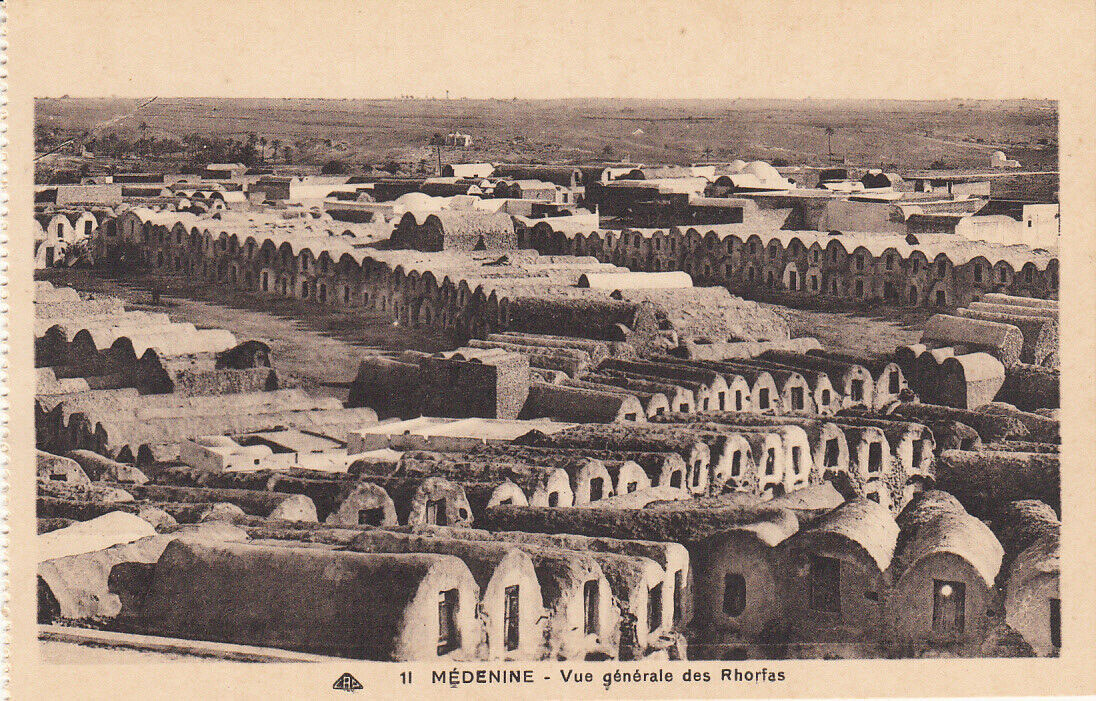
On the ground floor, the ghorfas sometimes housed caretakers along with animals such as camels, donkeys, or mules, while steep exterior stairs provided access to up to four levels of ghorfas used for storing food like cereals, dates, or animal products. Their large number is linked to the risk of extremely dry seasons. A single opening on each façade ensures ventilation.
The construction technique, without wooden beams or formwork, is due to the scarcity of large quantities of construction wood in the area. For each ghorfa, two walls are built two metres apart, and sacks filled with sand are stacked to shape the future vault. These are then covered with a mat, onto which a layer of clay is spread. Once the plaster vault is dry, the sacks are removed. The vaulted rooms allow for the stacking of multiple stories without the need for timber for the floors. Furthermore, they are most efficiently used in continuous series, where the lateral thrusts of the vaults counterbalance each other, making it possible to reduce the wall thickness, with each wall serving as support for two adjoining vaults.
A ksar, a fortified Berber village, typically contained around 200 ghorfas. Their massive presence also served a defensive function, with the blind wall facing outward.
The most famous group of ghorfas was in Medenine, where a complex of 25 courtyards with over 6,000 ghorfas formed the city itself. They were built by groups of nomads to better sustain their lifestyle until their destruction in 1962 to make way for a new urban plan. Today, only two courtyards remain.

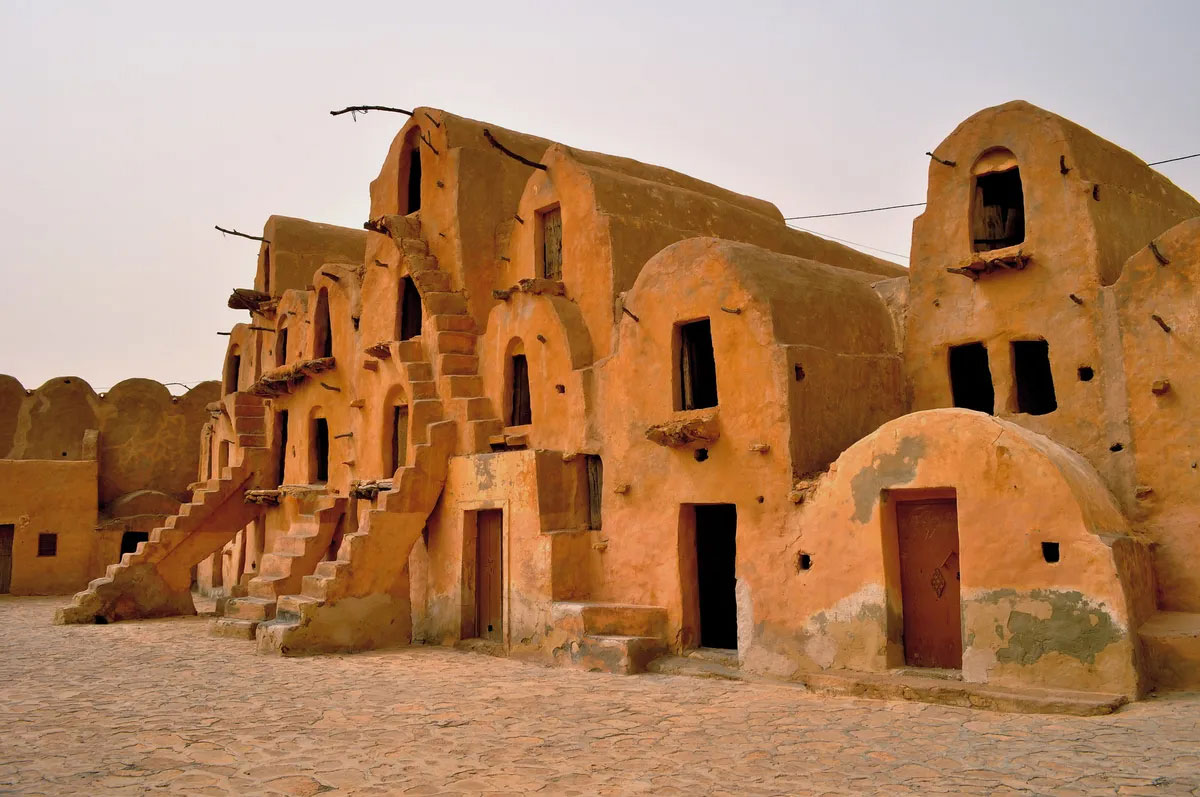
Ksar Ouled Soltane Panegyrics of Granovetter / CC BY-SA 2.0 via Atlas Obscura

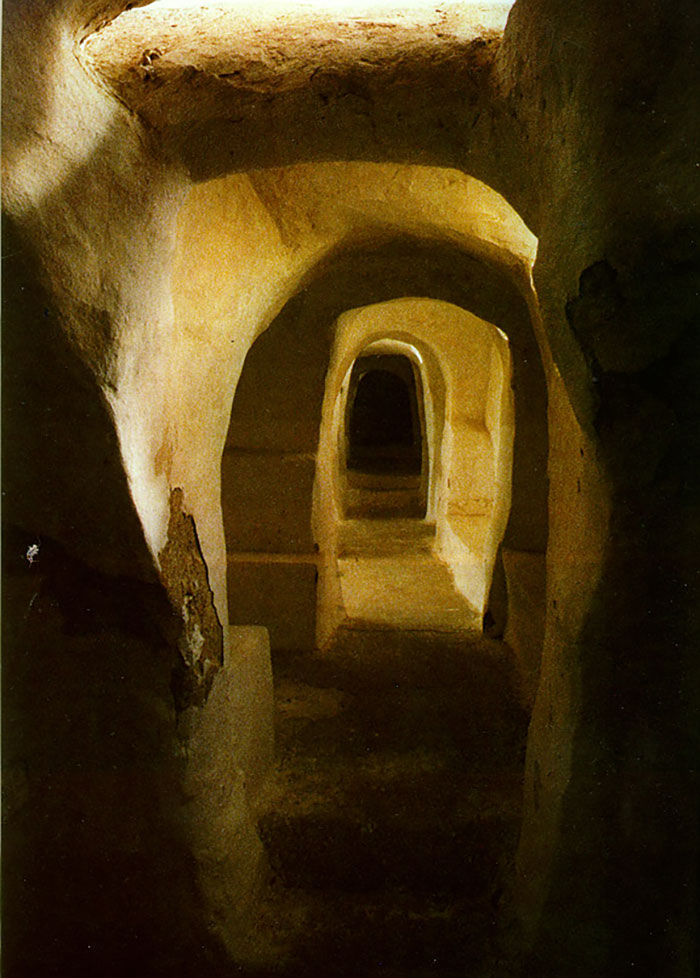

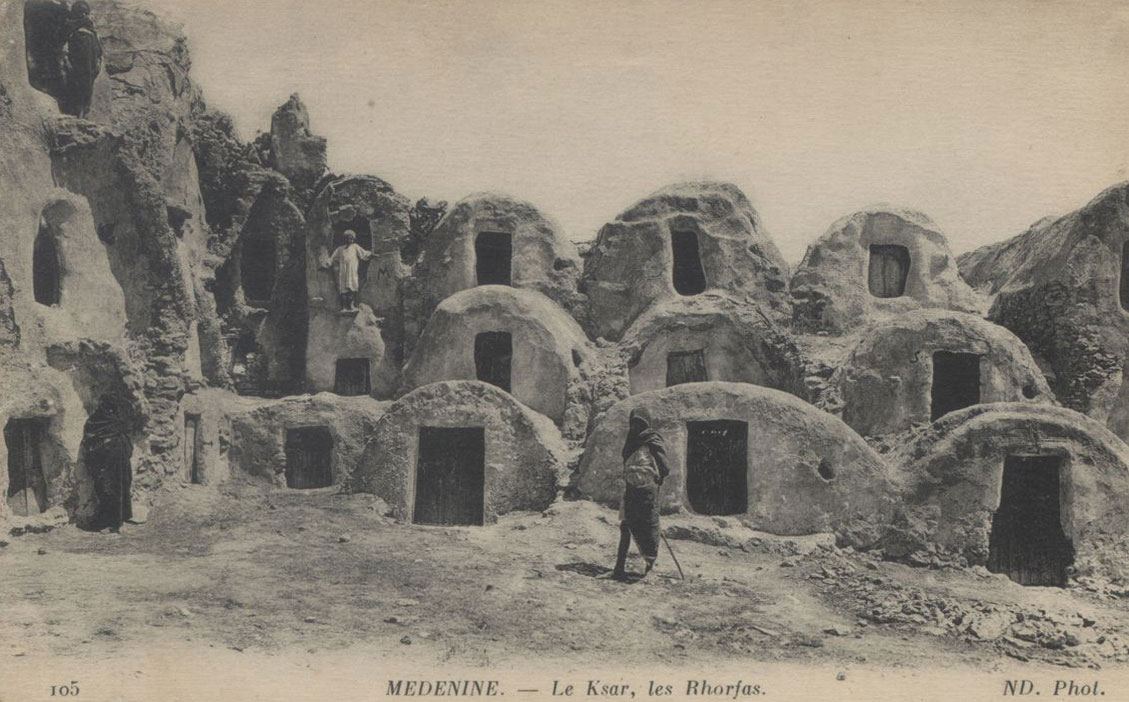

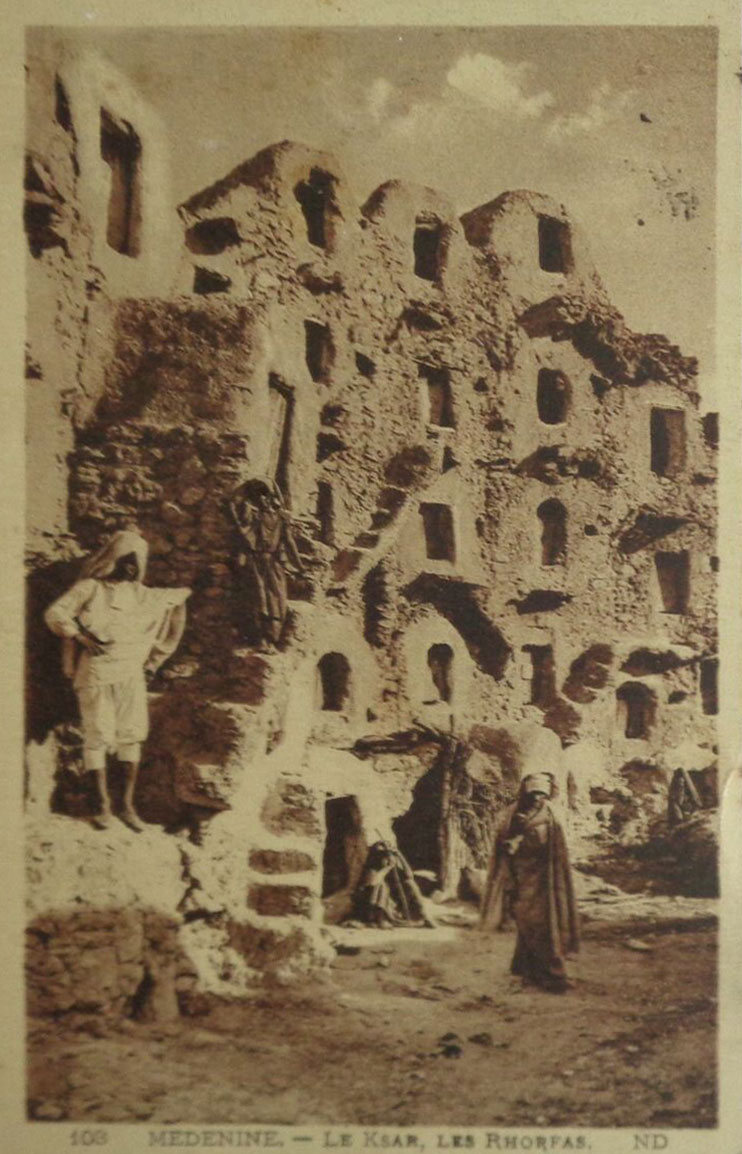

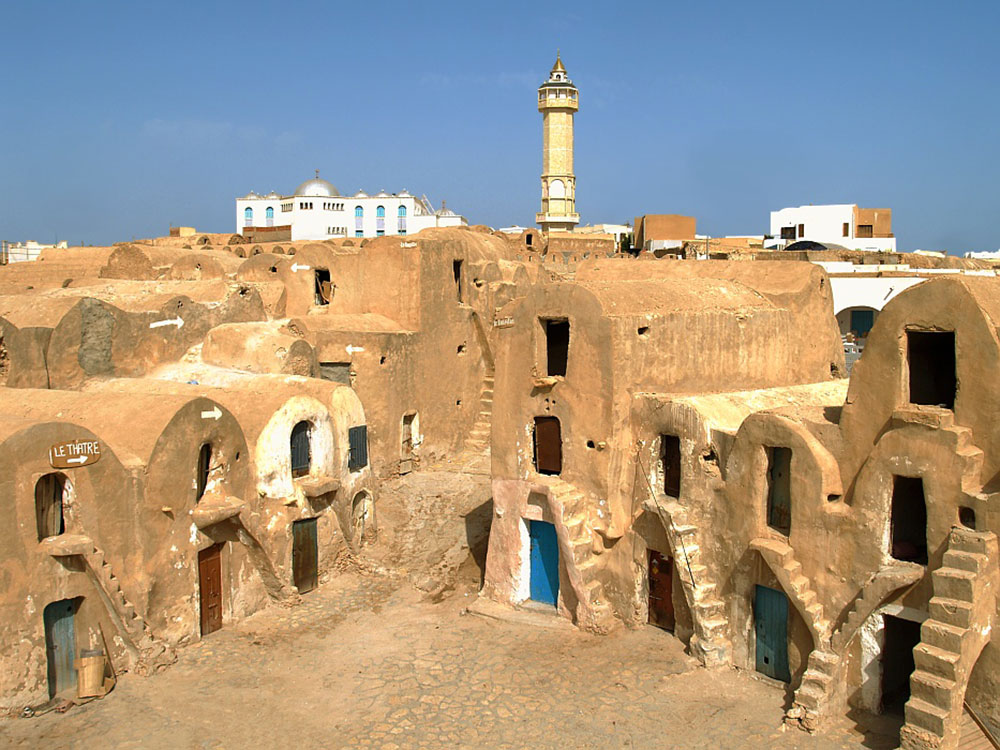
© Jose Mario Pires / CC BY-SA 3.0
Further reading: E.B., “Ghorfa”, Encyclopédie berbère [Online], 20 | 1998, document G45, Online since 01 June 2011, connection on 27 March 2025. http://journals.openedition.org/encyclopedieberbere/1924
<!–
–>



